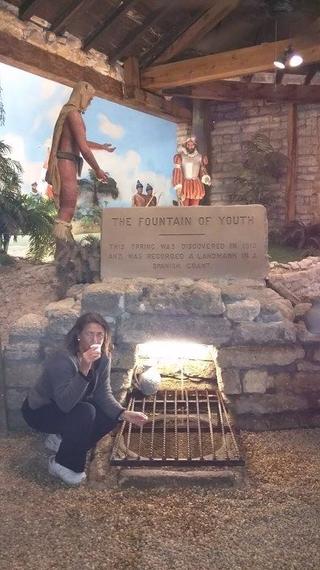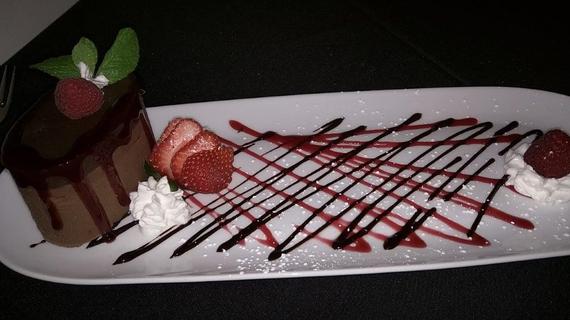Exploring Old and New St. Augustine
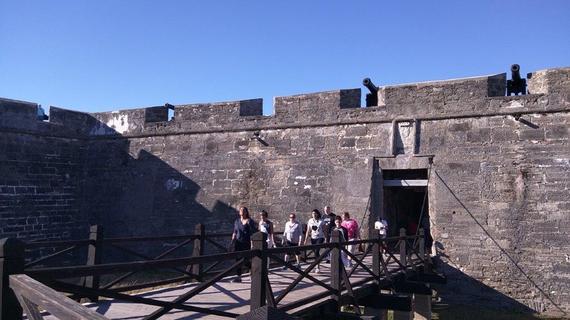
Join the visitors enjoying the sights of historic St. Augustine
Although you’re not aware of it, you’re probably living in the area once called La Florida. Centuries before it became the US and Canada, that is the name Ponce de Leon gave to the whole of North America when first he stepped ashore in 1513. Whether or not he was seeking the fountain of youth, the Spanish conquistador did find the verdant east coast, claimed the whole for Spain, and proclaimed it La Florida, a name evoking its lush fauna and flora. The subsequent settlement established in 1565, 42 years before Jamestown and 55 years before the Pilgrims landed in Plymouth, St. Augustine is America’s truly oldest colony and today it’s a thriving mix of colorful history and charming kitsch. Invited to visit I learned how to go about discovering its modern incarnation.
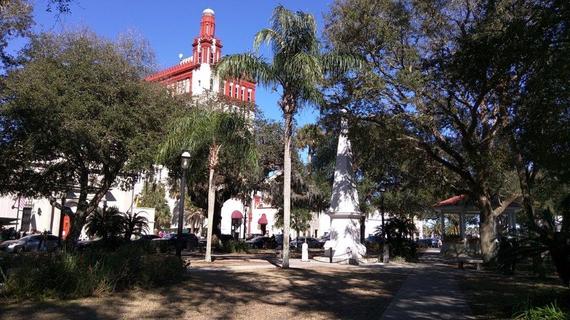
Plaza de la Constitucion at the heart of St. Augustine’s historic district
1. GETTING AROUND
Getting around is easy in the compact square blocks of historic St. Augustine. Carriages, bicycles, scooters, pedicabs are options, but the smartest solution is signing on with one of the two trolley firms which circle the city, stopping at over a dozen historic sites at 15-minute intervals for patrons to hop on and off. The drivers provide informative and comical commentary and tickets are good for three days. Starting off with an hour-long round trip circuit of the sights is ideal orientation. After that, walking is the easiest, simplest solution.
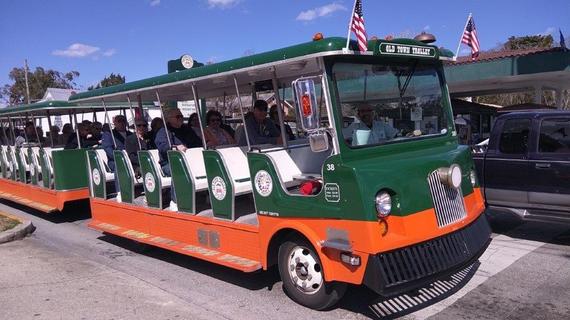
Colorful trolleys carry passengers on hop on and off guided tours
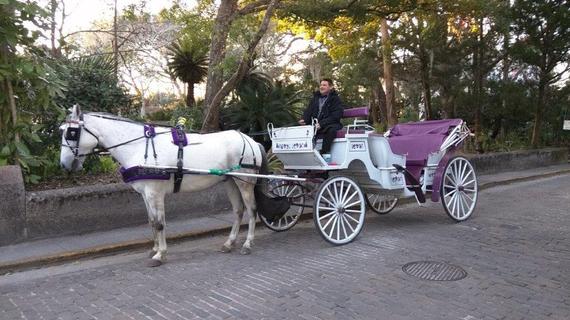
Horse and buggy carriages clip clop through town
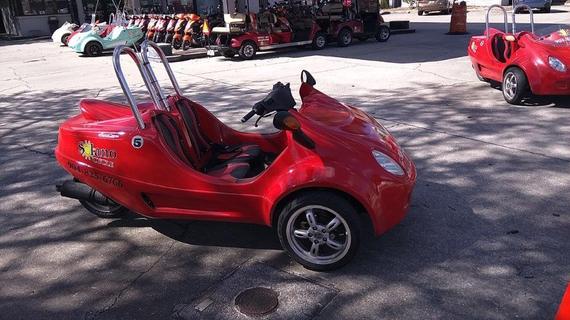
Tricycle rental scooters can be rented

Covered buggy rentals can be driven around town
2. INVESTIGATING ORIGINS
Fifty-two years after Ponce de Leon’s landing, Spanish conquistador Pedro Menendez arrived in 1565 and established the colony. Originally adjacent to the extensive Timucan Indian settlement, it moved across the water to Anastasia Island and then back to establish the permanent site on the mainland. Extensive archaeological digs have verified the authenticity of these sites.
Visitors can start at the 208-foot high Great Cross that marks the spot where Menendez landed and held a mass. His casket is preserved in the nearby museum of the Mission Nombre de Dios.
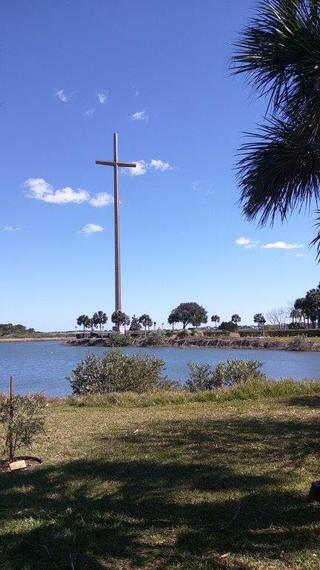
A cross marks the actual spot where Menendez founded the city
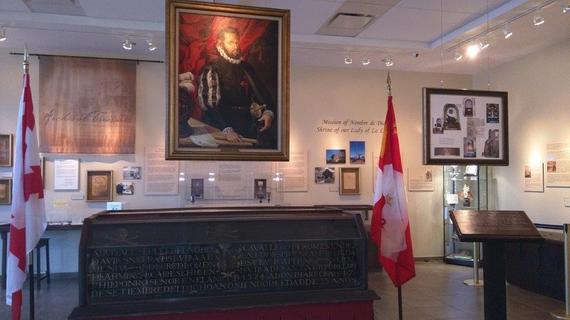
Casket and portrait of Menendez are displayed in the mission museum
Steps away the site of the first settlement is marked on the water side of the 15-acre Fountain of Youth Archaeological Park. Dating from 1867, the renowned spring is Florida’s oldest roadside attraction and a necessary stop which today has expanded to encapsulate both the authentic early history and the kitsch of the locale. Peacocks strut through the park and friendly squirrels pause at your feet asking for peanuts. In settings recreating the original thatched Timmucan huts and a copy of the original Franciscan mission chapel, re-enactors demonstrate how to fire crossbows, muskets, and the only 16th-century breech-loading cannon in America.

Fountain of Youth Archaeological Park displays archeological and cultural sites
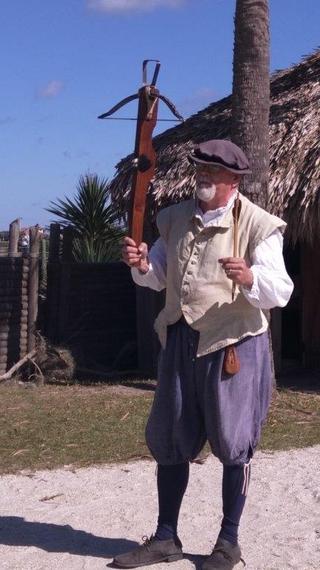
Crossbow demonstrations entertain park visitors
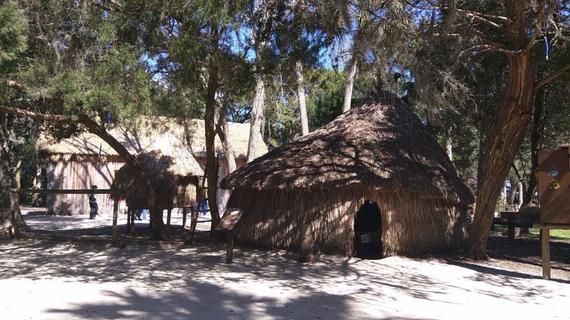
Native American Timucan structures have been reconstructed
On the other side of the park the “actual” Fountain of Youth is exhibited in a shelter decorated with life size dioramas. Visitors are invited to sip the slightly sulfurous water that spouts up from 240 feet below in the extensive artesian Floridan aquifer, a spring that may actually have been tasted by the Spanish.
Whether or not the fountain is therapeutic, the park is full of attractions. Descriptive signs outline the life span of De Leon, explain the archaeology sites, describe the local plants. A planetarium show illustrates how early sailors navigated by the stars and a giant globe lights up to trace paths of the early explorers.
Visitors are invited to savor a cup of the slightly sulfurous water at the Fountain of Youth
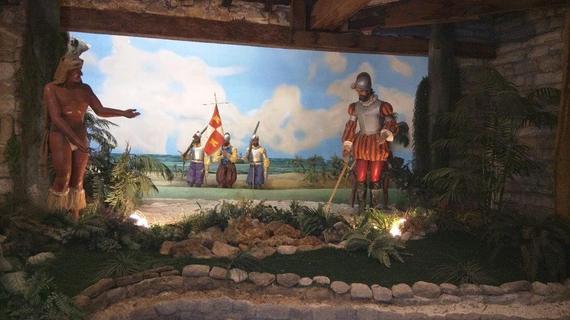
Ponce de Leon diorama illustrates the “discovery” of the Fountain of Youth

Helpful signs describe native plants
3. FINDING FLAGLER FEATURES
Before developing Palm Beach and extending the railway all the way down to the keys, Standard Oil baron Henry Morrison Flagler focused on St. Augustine with three grand hotels among his original projects.
Built in 18 months with no detail spared, the Ponce de Leon Hotel was precursor to the Breakers in Palm Beach. The mammoth structure in Spanish Renaissance style, an early project of youthful Carrere and Hastings, was elaborately decorated by Maynard and Tiffany. Guests could move in to spend the “season” in retreat from the cold weather up north. Now converted to private Flagler College, students host tours of its grand rotunda and dining room.
Across the street the Alcazar Hotel, now the Lightner Museum, housed a pool, saunas, steam rooms, gymnasium, casino providing diversions for guests at the Ponce and less expensive hotel rooms for those who wished to stay.
Beside them, the Casa Monica acquired by Flagler, operates today as the city’s grandest hotel.

Statue of Henry Flagler greets visitors to Flagler College, his former Ponce de Leon Hotel
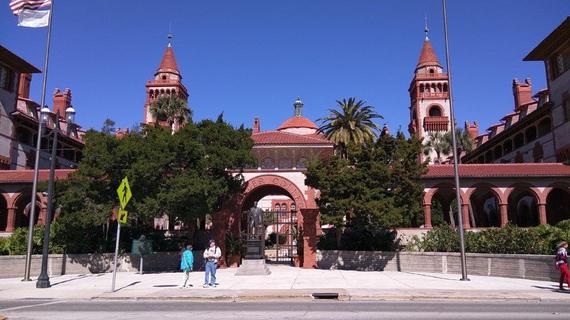
Flagler College was originally Flagler’s grand hotel
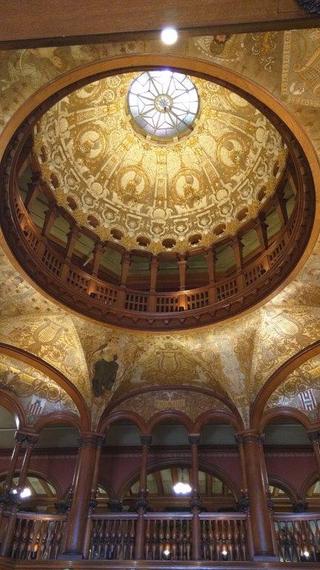
Ponce de Leon rotunda is covered with motifs from mythology and history
4. SHOPPING
Pedestrian St. George Street runs the length of the historic region, lined with eateries and one-of-a-kind boutiques selling antique, handcrafted, and unique clothing, souvenirs, and gifts. Nearby Aviles is America’s oldest public street, lined with galleries and art shops. The St. Augustine Premium Outlets and the St. Augustine Outlet Mall are located a short drive away.
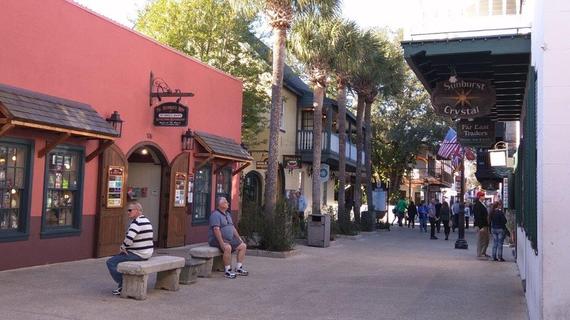
Pedestrian walkway St. George Street leads visitors through town
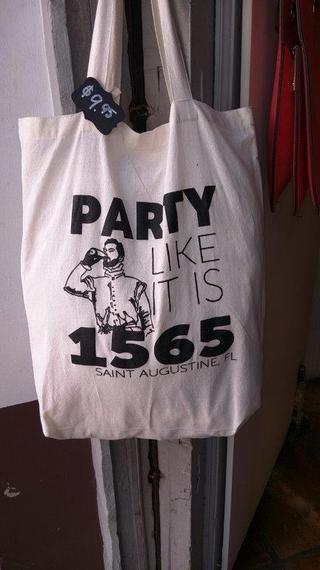
Souvenir tote bags can be filled with merchandise from boutiques and stores
5. CABINETS OF CURIOSITY
Grey stone Warden Castle houses the official “Ripley’s Believe It Or Not,” where visitors can “take a walk on the weird side” viewing exhibits of more than 800 curiosities from shrunken heads and a 632-foot chain made of gum wrappers to a giant clamshell bathtub and a “mosaic” rendering of the Last Supper made up of pecans. A brief video narrates the life of founder and cartoonist Robert Ripley who started the craze.
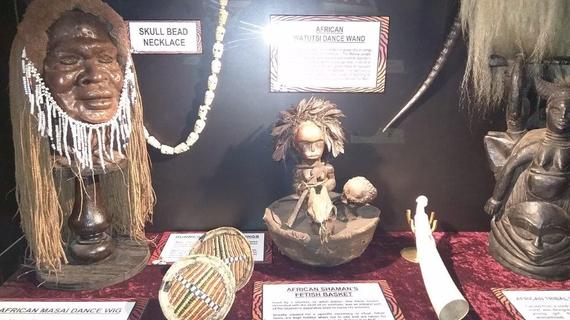
Artifacts at Ripley’s Believe It Or Not range from the unusual to unique
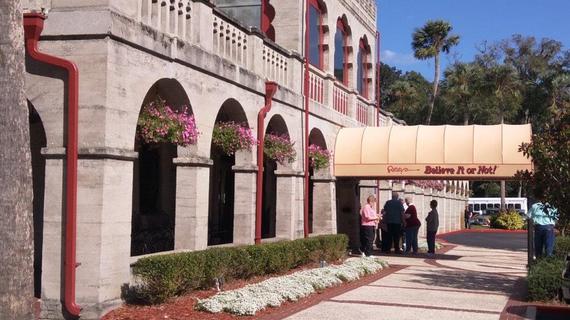
Believe It Or Not Castle houses the collection of oddities
More sedate and equally engrossing is the collection of assorted Victorian and Beaux Arts relics, antique music boxes, Tiffany glass, an Egyptian mummy, a model steam engine in the Lightner Museum. Assembled by a Chicago newspaper magnate its items are displayed in the elegant ball room and antique sauna rooms and Turkish bath of the former Spanish Renaissance Revival Alcazar Hotel with a cafe in the area which once housed the world’s largest indoor swimming pool.
Nighttime ghost tours visit local cemeteries and haunted pubs. Guided tours through the San Sebastian Winery, St. Augustine Distillery, and Whetstone Chocolates with samplings as the tours conclude to introduce visitors to local delicacies.
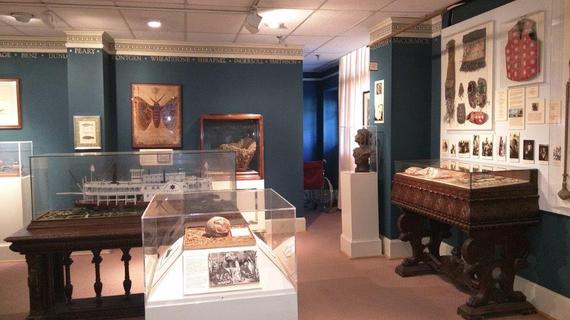
Displays at the Lightner Museum
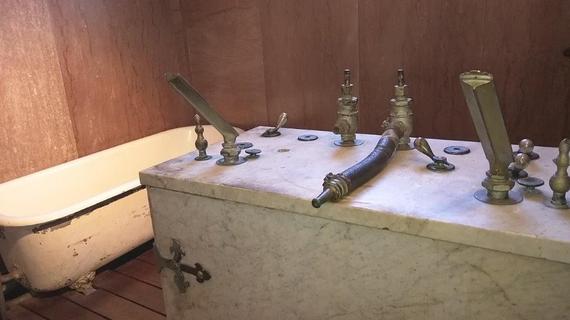
Historic spa facilities house displays at the Lightner Museum
6. HISTORIC SITES AND HOUSES
Scattered through town are more than 60 historic sites and museums, enough to fill up days of browsing. There are cannon-firings and exhibits at the Castillo de San Marcos, the country’s oldest masonry fortification built of local limestone and shell coquina stone to protect the city from pirate raids. Guides at the Ximenez-Fatio House Museum tell tales of guests who lived there when it served as a boarding house. In the town square, footsteps acknowledge civil rights leaders who “sat-in” at the Woolworth’s soda fountain once across the street.
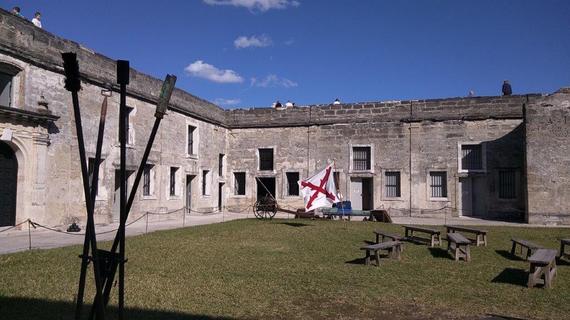
Castillo de San Marcos was built to protect the city from pirates and raiders
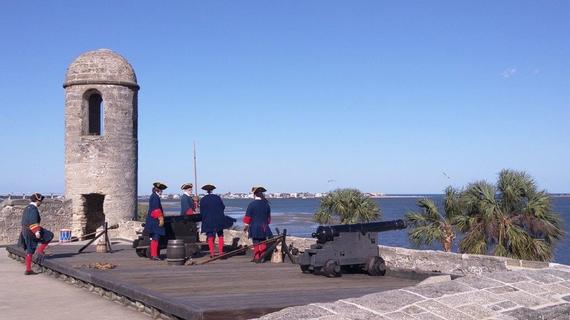
Cannon firing ceremonies are held at the Castillo
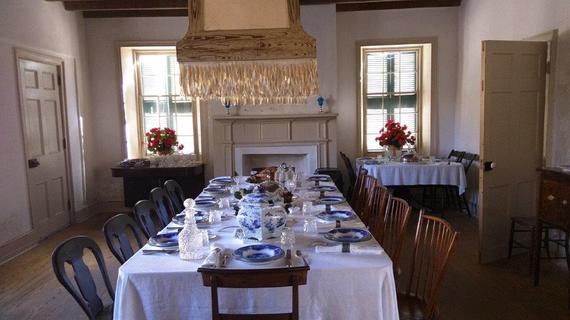
Historic boarding house dining room
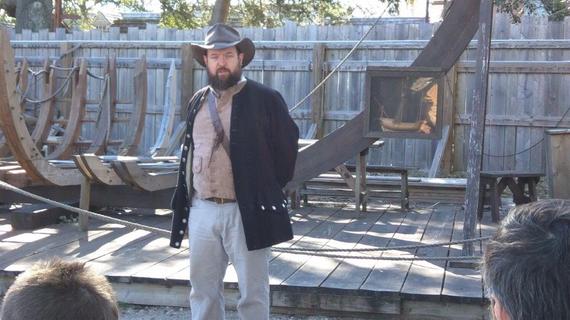
A popular guide leads guests through the Colonial Quarter
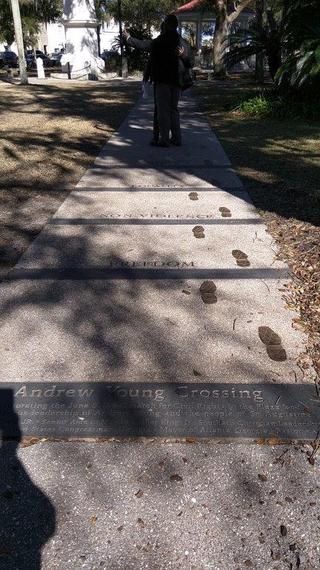
Andrew Young is acknowledged with other civil rights leaders
7. IMAGINATIVE MUSEUMS
At the Spanish Military Hospital Museum a re-enactor nurse explains early surgical and apothecary procedures. Visitors view treasure chests and skull and crossbones flags in the arrrrrgh St. Augustine Pirate & Treasure Museum.
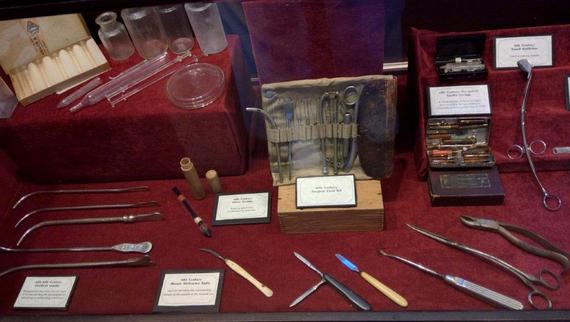
Antique implements for surgery and medical care are displayed at the Spanish Military Hospital Museum
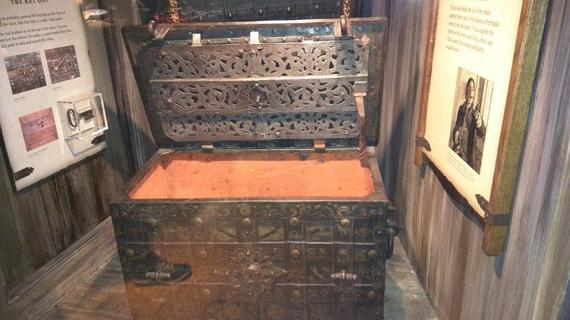
Pirate museum displays illuminate life on the high seas
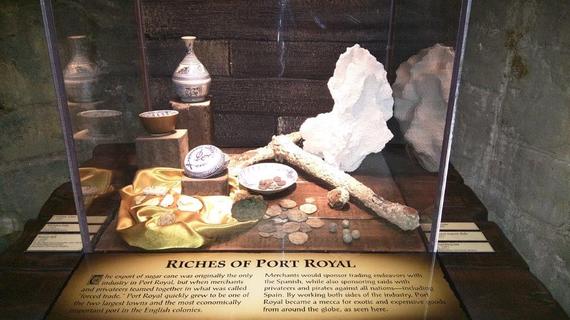 Pirate lore exhibit in the Pirate & Treasure Museum
Pirate lore exhibit in the Pirate & Treasure Museum

Leashed dogs are welcome in several attractions and parks
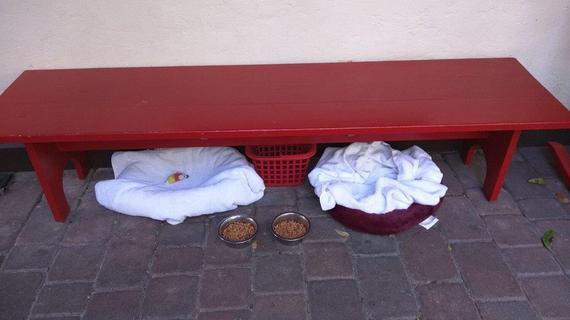
A bench for pets supplies water and snacks at St. Francis Inn
8. OUTDOOR ACTIVITIES
Outdoor enthusiasts can’t overlook ten local golf courses, half a dozen beaches, dolphin water tours, spa facilities, and boating.

With the PGA TOUR headquarters nearby, golf is a popular pastime
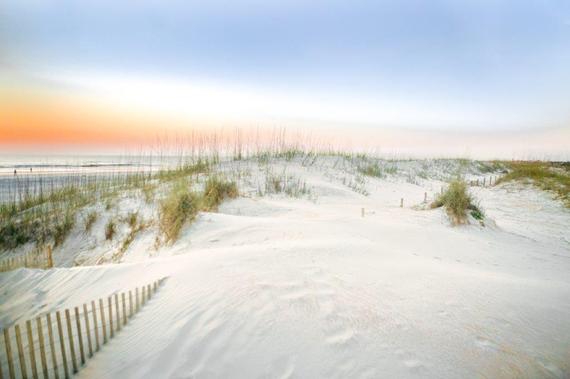
Beach basking is an oceanfront option
9. LODGING
Visitors can experience history by staying at one of over two dozen historic homes which have been converted to charming bed and breakfast inns, many of them extending hospitality beyond merely B&B basics. At the venerable St. Francis Inn and its offshoot Casa de Suenos extras include bloody Marys and local Black Bear jam with breakfast, national newspapers, cocktail hours with wines and snacks, home-baked late-night desserts, beach and fitness passes, all-day flavored coffees. The Hilton and the Bayfront Inn are popular along the waterfront, and the Casa Monica in the center of town, restored from the Flagler era, survives as the city’s grand hotel.
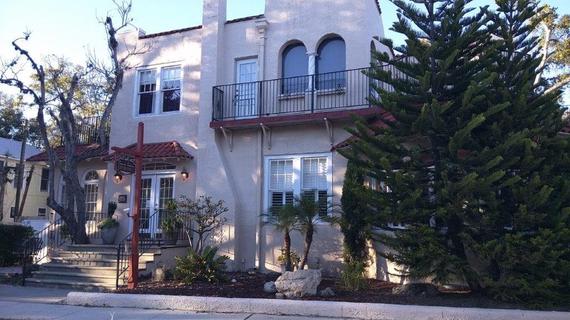
Casa de Suenos is a B&B in the historic district
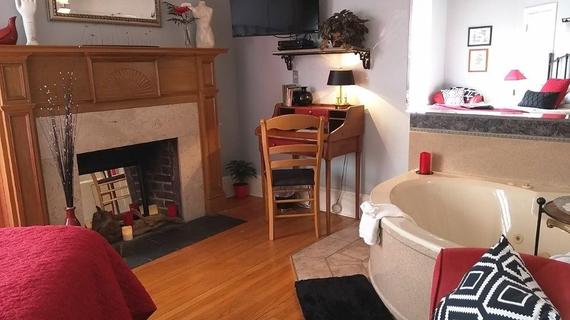
Guest room in Casa de Suenos B&B
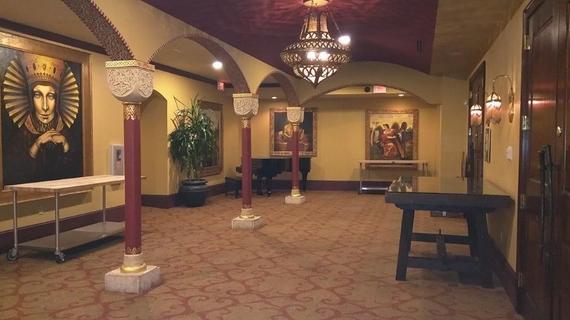
Historic lobby of the Casa Monica Hotel
10. DINING
Local produce and fresh seafood are featured in cuisine reflecting Spanish, Irish, Greek Italian, Brazilian, Cuban, French, Minorcan, and British cultures — many dishes feature the spicy local datil peppers. Casual diners can sip Green Parrot Session Ale at an outdoor table at the Colonial Quarter’s Bull and Crowne, shredded brisket at La Herencia Cafe, artichokes Giovanni at Cafe Alcazar.
For more formal dining, chef Sam Easton cooks up herb crusted sea bass, Minorcan chowder, goat cheese crusted pork at Old City House Inn & Restaurant. At Casa Monica’s Costa Brava, diners settle onto white leather banquettes under historic crystal chandeliers and sample Bees Knee or Red Queen mini cocktails before savoring the ham, cheese, and fig Hunt Platter, lamb lollipop chops, coastal crab cakes, and other Mediterranean/Spanish taco fusion cuisine concocted by Chef Ross Ruffino.
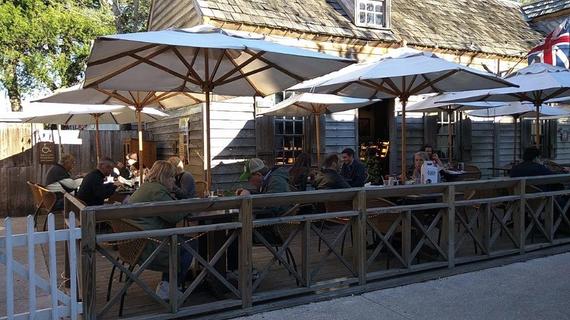
Dining outdoors on pedestrian St. George Street
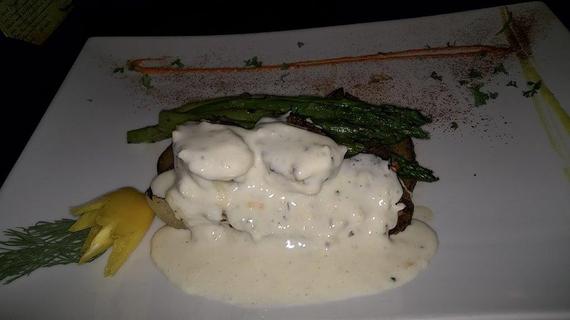
Scallops are prepared in datil sauce at the Old City House Inn & Restaurant
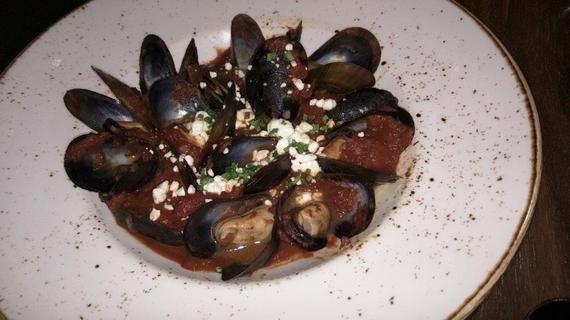
Savory mussels are served in Casa Monica’s Costa Brava restaurant

